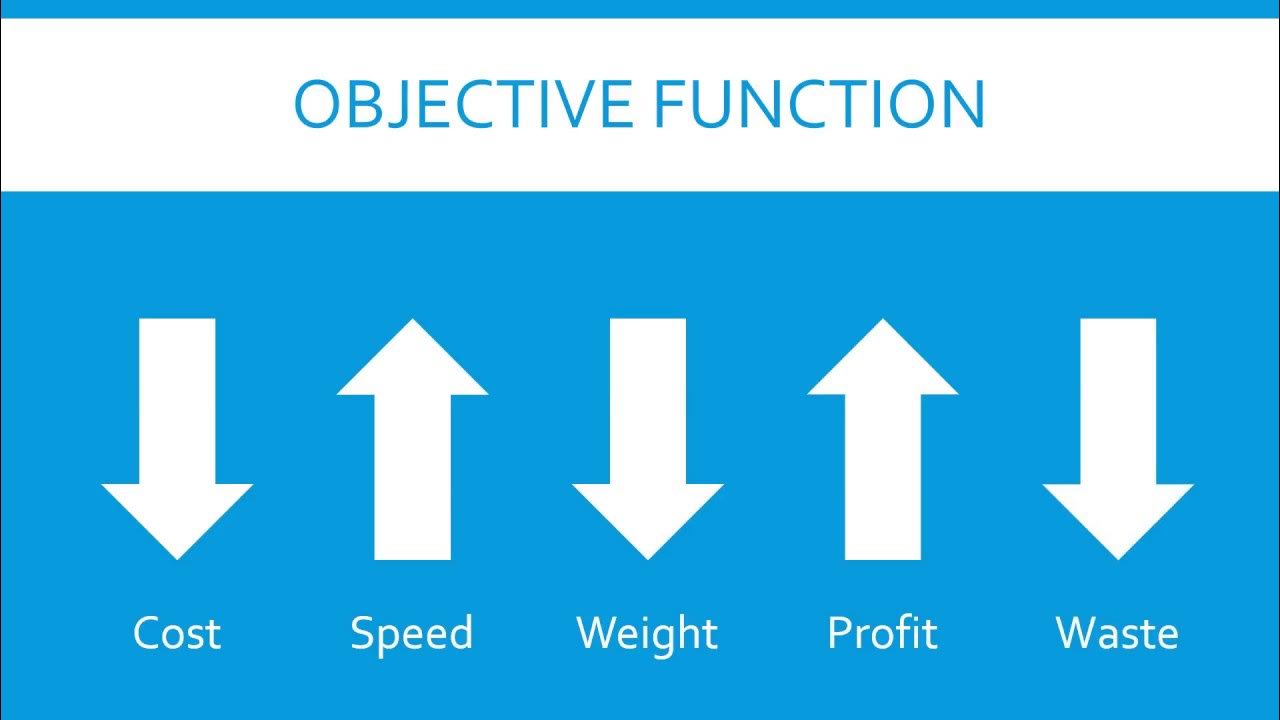Mathematical Optimization | Chapter 2 : Types of Mathematical Functions | Indonesian
Summary
TLDRThis video provides an in-depth exploration of optimization in mathematics, covering key concepts such as decision variables, objective functions, and constraints. It outlines three main methods for solving optimization problems: graphical, analytical, and numerical approaches. The video dives into different types of mathematical functions, including linear vs. nonlinear, unimodal vs. multimodal, and convex vs. concave. Viewers learn how to identify the types of functions and their characteristics, such as identifying maxima or minima, and understanding the role of derivatives in determining convexity or concavity. The session concludes with examples to apply these concepts in optimization problems.
Takeaways
- 😀 Optimization involves key elements like decision variables, objective functions, and constraints, essential for problem-solving.
- 😀 There are three main approaches to solving optimization problems: graphical, analytical, and numerical methods.
- 😀 The graphical method can be time-consuming and less accurate if not supported by proper software tools.
- 😀 The analytical approach relies on classical optimization theory, mainly using calculus and differential methods for problem-solving.
- 😀 Numerical methods are helpful when problems are difficult to solve analytically, especially for complex mathematical models.
- 😀 Optimization problems can be categorized based on the type of function used, such as linear vs. nonlinear, unimodal vs. multimodal, and convex vs. concave.
- 😀 Linear functions are represented by straight lines in graphs, whereas nonlinear functions can take various complex forms such as quadratic, cubic, exponential, and hyperbolic.
- 😀 The distinction between unimodal and multimodal functions is based on the number of extremum points, with unimodal functions having a single extremum and multimodal having multiple.
- 😀 Convex functions have solutions where any line segment connecting two points on the graph stays above the curve, while concave functions are the opposite, with the line staying below the curve.
- 😀 Convex functions are often used in minimization problems, while concave functions are associated with maximization problems.
- 😀 The second derivative test is used to determine whether a function is convex or concave. A positive second derivative indicates convexity, while a negative one indicates concavity.
Q & A
What is the first element in an optimization problem?
-The first element in an optimization problem is the decision variable, often denoted as 'x'. If there is more than one variable, it can be represented as 'X1, X2, X3', and so on.
What are the three main approaches to solving optimization problems?
-The three main approaches to solving optimization problems are: 1) Graphical method (GTA), 2) Analytical approach using calculus, and 3) Numerical methods.
What are the limitations of using the graphical method for optimization?
-The graphical method is time-consuming and less accurate when precise scaling and software tools are not available.
How is the analytical approach used to solve optimization problems?
-The analytical approach uses classical optimization theory and primarily involves differential calculus, specifically the concept of derivatives to solve optimization problems.
What are the three types of functions in mathematical models for optimization?
-The three types of functions are: 1) Linear vs. Nonlinear, 2) Unimodal vs. Multimodal, and 3) Convex vs. Concave.
How can we differentiate between linear and nonlinear functions?
-A function is linear if its graph is a straight line, and nonlinear if its graph is curved or has other shapes, such as quadratic, cubic, exponential, or hyperbolic forms.
What is the difference between unimodal and multimodal functions?
-A unimodal function has only one extremum (either a maximum or a minimum), while a multimodal function has multiple extrema (both maxima and minima).
What are the key characteristics of convex and concave functions?
-A convex function has a curve that opens upwards, and a concave function has a curve that opens downwards. Convex functions are typically used in minimization problems, while concave functions are used in maximization problems.
How do we determine whether a function is convex or concave mathematically?
-To determine if a function is convex or concave, we examine its second derivative. If the second derivative is greater than or equal to zero, the function is convex. If it is less than or equal to zero, the function is concave.
What is a strictly convex function?
-A strictly convex function has a second derivative greater than zero, meaning it only has one extremum, which is a global minimum.
What is the significance of the global and local extrema in multimodal functions?
-In multimodal functions, the global maximum or minimum represents the highest or lowest point overall, while local extrema are points that represent the highest or lowest values within a specific region, but not globally.
Outlines

This section is available to paid users only. Please upgrade to access this part.
Upgrade NowMindmap

This section is available to paid users only. Please upgrade to access this part.
Upgrade NowKeywords

This section is available to paid users only. Please upgrade to access this part.
Upgrade NowHighlights

This section is available to paid users only. Please upgrade to access this part.
Upgrade NowTranscripts

This section is available to paid users only. Please upgrade to access this part.
Upgrade NowBrowse More Related Video

Mathematical Optimization | Chapter 1: Introduction | Indonesian

Introduction To Optimization: Objective Functions and Decision Variables

#1 LPP formulation problem with solution | Formulation of linear programming problems | kauserwise®

1 Linear Programming - Concept17072020

ART TEACHES MATHEMATICS IN THE MODERN WORLD-LESSON 1: INTRO TO LINEAR PROGRAMMING

Partial Derivatives (Part 1)
5.0 / 5 (0 votes)